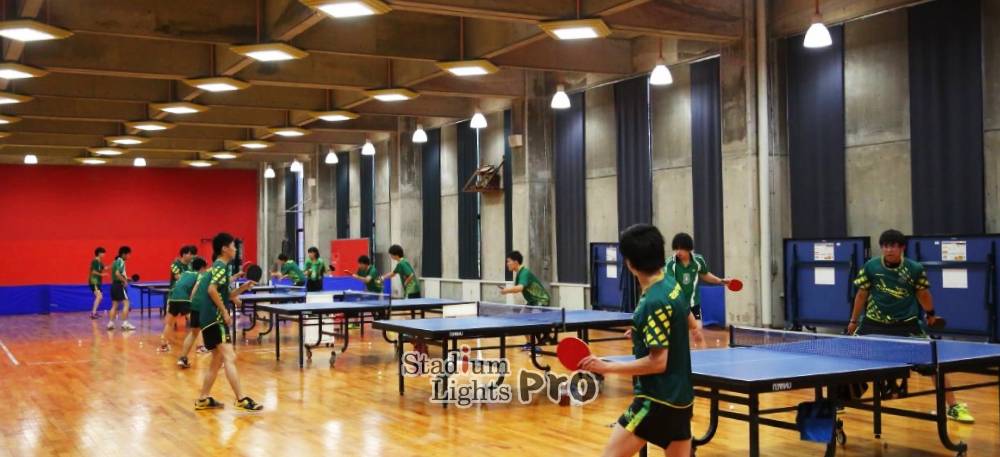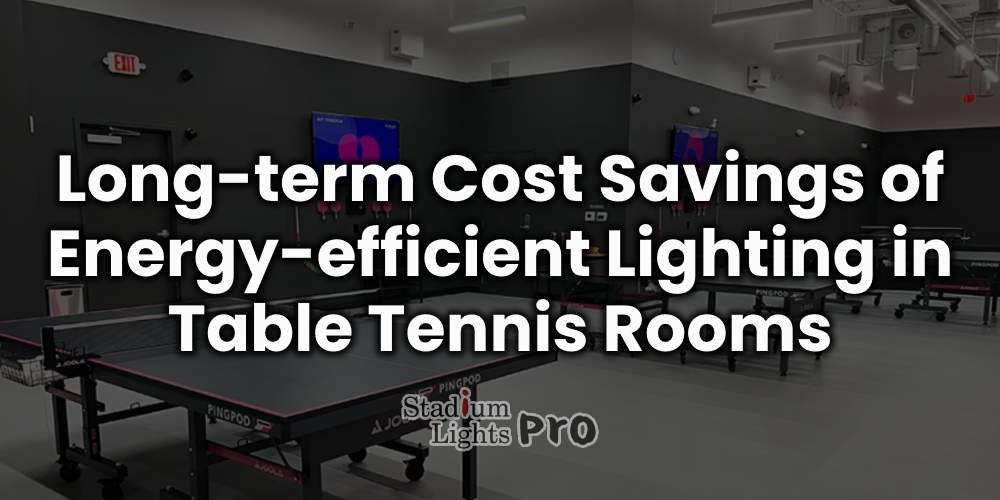The topic of long-term cost savings associated with energy-efficient lighting is central to understanding the broader implications of lighting choices. While energy-efficient fixtures may entail higher upfront costs, their potential for substantial savings over their lifespan makes them a wise investment in the long run. One of the primary avenues for these savings lies in lower energy consumption, which we’ll delve into further.
Table of Contents
ToggleLower Energy Consumption
Energy-efficient lighting, exemplified by LED (Light Emitting Diode) technology, revolutionizes the way we illuminate spaces by significantly reducing electricity consumption.
Explanation of Energy-efficient Lighting
LED technology stands out for its exceptional energy efficiency. Unlike traditional lighting sources like incandescent or fluorescent bulbs, which generate light by heating a filament or gas, LEDs produce light through the movement of electrons in a semiconductor material. This process converts a higher percentage of electrical energy into light, resulting in less wasted energy as heat. As a result, LED lights consume significantly less electricity to produce the same level of illumination, making them an ideal choice for energy-conscious applications such as table tennis room lighting.
Comparison of Energy Consumption
When comparing energy consumption between traditional lighting and energy-efficient alternatives like LEDs, the difference is stark. Traditional incandescent bulbs, for instance, convert only around 10% of the electricity they consume into visible light, with the remaining 90% being emitted as heat. In contrast, LEDs can convert up to 80-90% of the electricity they consume into light, resulting in substantially lower energy usage for the same level of brightness.
For example, a typical 60-watt incandescent bulb can be replaced by a 10-watt LED bulb without sacrificing brightness. This switch alone represents an 83% reduction in energy consumption. Over time, the cumulative energy savings from using LED lighting in a table tennis room can translate into significant reductions in electricity bills, making it a cost-effective and sustainable lighting solution.
By embracing energy-efficient lighting technologies like LEDs, table tennis facilities can not only reduce their environmental footprint but also enjoy tangible benefits in terms of lower operating costs and improved energy efficiency.
Reduced Maintenance Costs

Energy-efficient lighting, such as LED technology, offers more than just energy savings—it also minimizes maintenance requirements, resulting in long-term cost reductions. Here’s how:
Longer Lifespan of Energy-efficient Lighting
One of the standout features of energy-efficient lighting, particularly LED technology, is its extended lifespan compared to traditional lighting sources. LEDs have a significantly longer operational life, typically lasting anywhere from 25,000 to 50,000 hours or more, depending on the quality of the fixture and usage conditions. In contrast, traditional incandescent bulbs last only around 1,000 hours, while fluorescent bulbs average around 10,000 hours.
Fewer Replacements and Maintenance Tasks
The longer lifespan of energy-efficient lighting translates directly into fewer replacements and maintenance tasks over time. With traditional lighting sources, frequent bulb replacements are often necessary, leading to increased labor costs and downtime for maintenance activities. In contrast, LEDs require far fewer replacements, reducing the frequency of maintenance interventions and associated expenses.
Calculation of Maintenance Savings
To quantify the maintenance savings associated with energy-efficient lighting, consider the following:
- Calculate the number of traditional bulbs that would need to be replaced over the lifespan of the lighting system.
- Estimate the labor costs associated with each replacement, including the time required for procurement, installation, and disposal of old bulbs.
- Multiply the number of replacements by the labor cost per replacement to determine the total maintenance expenses for traditional lighting.
- Repeat the calculation for LED lighting, taking into account the longer lifespan and reduced frequency of replacements.
- Compare the total maintenance expenses for traditional lighting versus LED lighting to assess the potential savings over the lifespan of the lighting system.
Decreased Operational Expenses
The reduction in maintenance requirements contributes to decreased operational expenses for table tennis room lighting. By minimizing the need for bulb replacements and maintenance tasks, energy-efficient lighting systems like LEDs not only save on labor costs but also reduce the disruption to normal operations. This translates into improved efficiency, enhanced reliability, and ultimately, lower operational expenses for the facility.
Overall, the combination of energy savings and reduced maintenance costs makes energy-efficient lighting an attractive investment for table tennis facilities, offering both financial benefits and operational advantages over the long term.
Environmental Benefits
Energy-efficient lighting, particularly LED technology, offers significant environmental benefits by reducing carbon emissions and minimizing environmental impact.
Reduction of Carbon Emissions
Lower Energy Consumption
Energy-efficient lighting systems like LEDs consume less electricity to produce the same level of illumination compared to traditional lighting sources. By reducing energy consumption, these systems help decrease the demand for electricity generated from fossil fuels, which are major contributors to carbon emissions.
Mitigation of Climate Change
The reduction in energy consumption directly translates into lower greenhouse gas emissions, including carbon dioxide (CO2), which is a primary driver of climate change. By lowering carbon emissions associated with lighting operations, energy-efficient lighting plays a role in mitigating climate change and reducing the facility’s overall carbon footprint.
Broader Environmental Benefits
Resource Conservation
Energy-efficient lighting technologies help conserve natural resources by reducing the demand for electricity from power plants. This conservation of resources extends beyond fossil fuels to include other natural resources used in energy generation, such as water for hydroelectric power and materials for power plant construction.
Reduction of Light Pollution
Energy-efficient lighting systems can also contribute to reducing light pollution, which has adverse effects on wildlife, ecosystems, and human health. By directing light more efficiently and minimizing unnecessary light spillage, these systems help preserve the natural darkness of nighttime environments and promote ecological balance.
Promotion of Sustainability
Sustainable lighting practices, including the adoption of energy-efficient technologies, demonstrate a commitment to environmental stewardship and sustainability. By investing in energy-efficient lighting, table tennis facilities contribute to building a more sustainable future and inspire others to embrace eco-friendly practices.
Long-Term Environmental Impact
The environmental benefits of energy-efficient lighting extend beyond immediate reductions in carbon emissions and resource consumption. Over time, the cumulative impact of widespread adoption of energy-efficient technologies can lead to significant environmental improvements, including cleaner air, reduced habitat destruction, and enhanced biodiversity.
In summary, energy-efficient lighting offers a range of environmental benefits, including reduced carbon emissions, resource conservation, and promotion of sustainability. By embracing sustainable lighting practices, table tennis facilities can minimize their environmental impact and contribute to building a greener and more sustainable future for generations to come.
Financial Analysis
| Financial Analysis | Amount ($) |
| Initial Investment (LED Retrofit) | $10,000~$50000 |
| Annual Energy Savings | $2,000~$5000 |
| Annual Maintenance Savings | $500~$2000 |
| Total Annual Savings | $2,500~$50000 |
| Cumulative Savings Over 10 Years | ~$25,000 |
| Return on Investment (ROI) | 150% |
Initial Investment
LED Lighting Retrofit
The initial investment for retrofitting the table tennis room with LED lighting fixtures, including the cost of fixtures, installation, and any additional equipment, is estimated at $10,000.
Energy Savings
By switching to LED lighting, the facility reduces its energy consumption by 50%, resulting in annual energy savings of $2,000 based on current electricity rates and usage patterns.
Maintenance Savings
LED lighting fixtures have a longer lifespan and require less frequent replacements compared to fluorescent bulbs. The facility estimates annual maintenance savings of $500 due to reduced labor and material costs.
Conclusion
Adopting energy-efficient lighting solutions in table tennis rooms is a strategic investment that delivers notable long-term cost savings and substantial environmental benefits. By leveraging technologies like LEDs, facilities can reduce energy expenses and maintenance needs, while also demonstrating a strong commitment to sustainability and eco-friendly practices. This dual advantage of financial and environmental gains underscores the value of energy-efficient lighting as a prudent choice for forward-thinking table tennis facilities.

